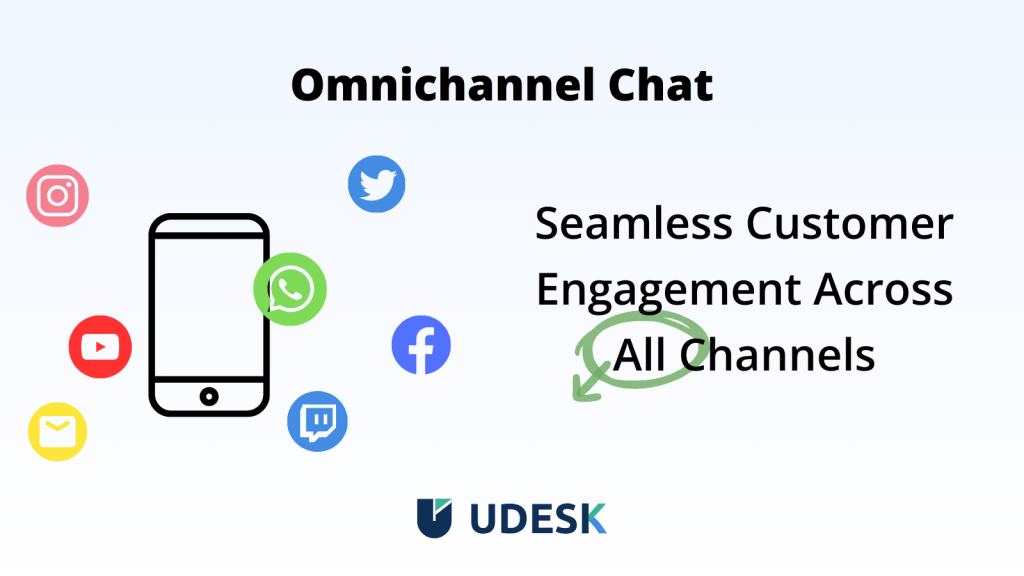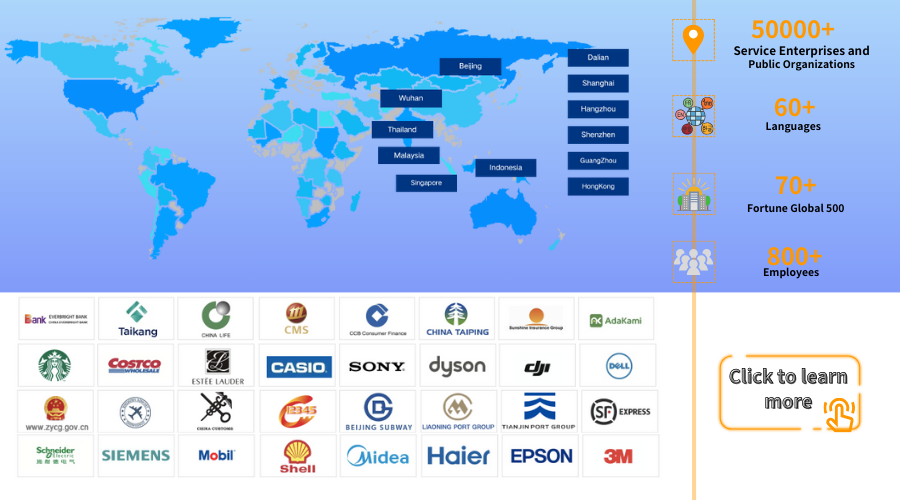Omnichannel Conversation: meeting the diverse communication needs of enterprises
Article Summary:We are all aware that the gradual adoption of new technologies like mobile internet, big data, and artificial intelligence has reshaped customer needs and enterprise services. As a result, the customer service model of enterprises is continuously evolving to meet the personalized needs of customers anytime, anywhere.
Table of contents for this article
- Customer service involves more than just answering phone calls.
- The range of service channels is growing more diverse.
- Prioritize the customer to enhance the perception of customer service.
- The “dual flow” of business and data
- Udesk’s Omnichannel Conversation is gaining popularity.
- 》》Take our Omnichannel Chat for a spin—for free—to see how it can work for your business.
We are all aware that the gradual adoption of new technologies like mobile internet, big data, and artificial intelligence has reshaped customer needs and enterprise services. As a result, the customer service model of enterprises is continuously evolving to meet the personalized needs of customers anytime, anywhere.
In recent years, the traditional call center service has evolved from just voice to a full media service, and the service content has gradually shifted from simple information inquiries, business processing, and complaint handling to differentiation, specialization, and intelligence. The full-channel, full-media online customer service system is riding the wave of Internet and digital operation transformation, and has emerged in response to changes in the social environment, fully leveraging the optimization and integration role in the allocation of social resources in the mobile Internet era.
Customer service involves more than just answering phone calls.
The internet’s development has quietly altered people’s consumption and lifestyle habits. More service needs are now shifting online, freeing access from time, location, or specific channels. In addition to traditional human interaction, people now expect real-time services through the internet.
Consequently, enterprise client management and service operations face new challenges. The shift from traditional customer relationship management to “social customer relationship management” emphasizes two-way collaborative conversations via social media. Furthermore, traditional call center voice service models and operation systems are insufficient for current and future service demands. Customer service has evolved from managing individual interactions to overseeing the entire service process through online channels.
The range of service channels is growing more diverse.
Emerging “members” are appearing on top of the traditional service channels. The development of a pre-channel service operation system, including various social networks such as WeChat and Weibo, has become an inevitable trend for the development of enterprise customer service, especially in the inevitable process of the internet wave. The diversified characteristics of customer groups are also one of the important reasons for the comprehensive layout of enterprise service channels, which helps in expanding new customers and retaining existing ones, ultimately achieving practical results in “expanding the territory.”
The new generation of information technology represented by 5G has opened up the channel for voice-to-data transmission, and has also enabled service operations to completely integrate interactive capabilities, that is, the ability to provide services across all channels. Regardless of which channel users initiate service demands, they can access the full-media call center service seats through an intensive portal system, allowing customers from different channels to receive standardized and efficient services through unified and professional service seats.
Prioritize the customer to enhance the perception of customer service.
After implementing an Omnichannel Conversation, companies can establish a customer-centric end-to-end service operation process for pre-sales, sales, and after-sales, with greater potential for service efficiency and innovation. For instance, the AI capabilities of the Omnichannel Conversation system can redirect simple services to the robot service channel, allowing human agents to concentrate on resolving complex issues or delivering personalized service to high-value customers, while also enabling and enhancing self-service capabilities. Through data analysis, we can proactively anticipate user needs, identify and address issues before the customer, and improve customer service perception and productivity.
The “dual flow” of business and data
Data management is a critical aspect of enterprise production and operation, playing a key role in their normal functioning. Call centers, as one of the most important data output departments in enterprises, are responsible for daily data production, collection, analysis, and presentation, as well as important tasks such as goal setting, data mining, trend forecasting, and the application of big data.
The emergence of an omnichannel call center represents a new phase in the digital customer operations of businesses. Online customer service systems can gather data such as search engine visits, customer browsing paths, and inquiries about product orders, allowing for a precise understanding of customer intentions prior to a conversation, tracking customer behavior patterns, and initiating dialogue at the opportune moment to capture every potential customer. By integrating with CRM systems based on customer behavior, a comprehensive customer profile can be easily created through the online customer service system, enabling in-depth communication with customers. Establishing a business and data mapping relationship chart, and further enhancing the overall operational value of the enterprise through data sharing and application.
Udesk’s Omnichannel Conversation is gaining popularity.
The customer service system is the basis of call center operations. To convert the traditional customer service system into an intelligent service platform with omnichannel access, collaboration, and touchpoints, it needs to handle business information queries, processing, and authentication, as well as an open platform application architecture based on intelligent technology capabilities to meet the unified access and operational scenario calling needs of various channels.

Udesk, a provider of AI and marketing customer service solutions in China, possesses advanced AI technology capabilities and can enhance its all-channel customer service system to be more intelligent. It can engage customers through various channels like Twitter, Youtube, Line, Facebook, ins, phone, web, and app. Additionally, it aids companies in gathering customer data assets, unifying customer identification, and delivering faster and more accurate services to meet personalized customer needs.

In various complex scenarios like marketing, sales management, customer service, and internal shared services, Udesk uses AI technology to enable machines to understand and think like humans. This improves customer service quality and efficiency. With AI intelligent algorithms, Udesk’s outbound marketing becomes more personalized, intelligently allocating customers based on their behavioral data and agent skill data. This increases inbound and outbound call frequency, and efficiently completes follow-ups and marketing with automated voice robot customer service outbound calls.
》》Take our Omnichannel Chat for a spin—for free—to see how it can work for your business.
The article is original by Udesk, and when reprinted, the source must be indicated:https://www.udeskglobal.com/blog/omnichannel-conversation-meeting-the-diverse-communication-needs-of-enterprises.html
All-in-One Chat PlatformOmnichannelOmnichannel Chat

 Customer Service& Support Blog
Customer Service& Support Blog



